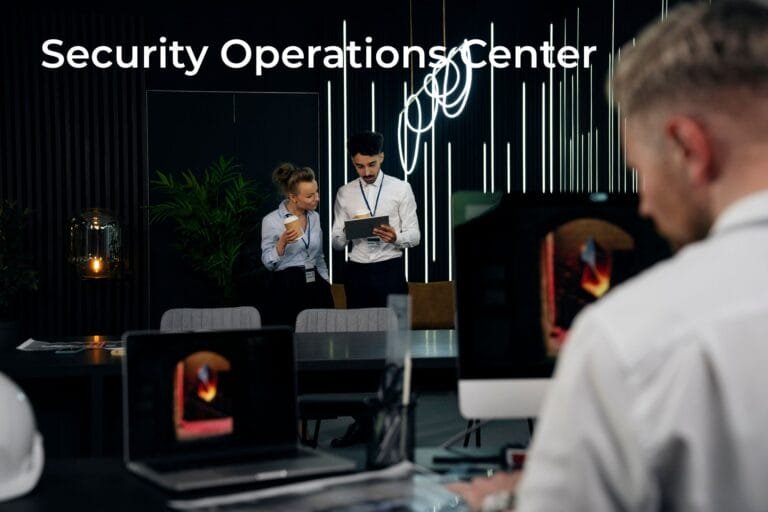Secure Compliance Solutions: Ensuring Business Resilience in a Dynamic Landscape
Businesses are faced with increasing difficulty in today’s quickly changing digital landscape: maintaining compliance while protecting sensitive data. The need for secure compliance solutions has grown to be critical, influencing how businesses operate and adjust to changing legal and regulatory environments.
Understanding Compliance in Modern Business
Integrity lies at the core of any business. It involves following a range of guidelines and principles that govern how organizations should operate. These rules cover ethical and industry-specific standards. In today’s changing markets compliance has become even more crucial as regulations continue to grow in complexity
Importance of Compliance
Compliance holds importance in aspects of a business. Essentially it fosters trust and credibility, among stakeholders serving as proof of an organization’s dedication to standards and compliance with regulations. This in turn enhances the company’s reputation, within the industry.
Furthermore ensuring compliance acts, as a barrier against legal consequences. Failing to adhere to industry regulations or data protection laws can result in penalties, legal disputes, and harm to one’s reputation. As a result, businesses perceive compliance not as a requirement but as a proactive approach, to minimizing risks.
Challenges Faced in Achieving Compliance
Ensuring and upholding compliance is quite a task despite its significance. The regulatory environment constantly evolves, with regulations emerging and existing ones transforming daily. This changing landscape poses difficulties, for businesses requiring them to be agile and adaptable, in their strategies to meet compliance requirements.
This difficulty is made even more difficult by the complexity of today’s data environments. Organizations collect and store huge quantities of data, so ensuring compliance with the many data protection laws—such as the CCPA and GDPR—requires complex procedures.
Furthermore, it might be difficult to achieve cross-functional alignment within a company. Departmental cooperation is frequently needed for compliance initiatives, which calls for open communication, delegated tasks, and a coordinated strategy to achieve compliance goals.
Essentially, the difficulties associated with compliance in contemporary company settings include not only understanding and adapting to changing legislation but also putting plans into place that include every aspect of the organizational ecosystem, from stakeholder involvement and data management to staff training.
To effectively navigate these hurdles, one must adopt a complete strategy that makes use of technology, streamlined procedures, and a culture that places a high value on moral behavior and standard compliance. To handle these issues, secure compliance solutions become essential tools. They provide a methodical way to preserve regulatory conformity while protecting sensitive data.
The Evolution of Secure Compliance Solutions
Historical Context
Throughout company history, security compliance solutions have undergone an amazing journey. At first, manual procedures were used to manage compliance. To make sure that regulations were followed, businesses relied on thorough documentation, audits, and manual checks—a procedure that was frequently laborious and prone to human mistakes.
However, the digital revolution brought forth a seismic shift in compliance paradigms. The advent of technology ushered in a new era, enabling organizations to leverage automated systems and innovative tools to streamline compliance efforts.
Technology Advancements

Secure compliance solutions have transformed due in large part to technological developments. The landscape has transformed due to the integration of advanced technologies like blockchain, machine learning, and artificial intelligence (ML).
Predictive analytics is made possible by AI and ML algorithms, which help firms anticipate compliance problems and take proactive measures to overcome them. By analyzing large information and finding trends and deviations, these technologies improve the accuracy and efficiency of compliance procedures.
Blockchain technology, which is well known for being decentralized and unchangeable, is also being used in compliance. Stakeholder trust is increased by its capacity to produce clear, impenetrable records that ensure the integrity of compliance-related transactions and data.
Furthermore, the accessibility and scalability of compliance tools have changed with the introduction of cloud-based solutions. Businesses may quickly deploy compliance solutions across several locations and effortlessly integrate them into their current systems because of cloud computing’s flexibility.
The development of secure compliance solutions represents a paradigm shift in the way that regulatory adherence is approached, as well as a transition from manual to automated operations. Modern solutions are proactive rather than reactive; they anticipate, adjust, and protect companies from compliance issues instantly. This development highlights how crucial technology is to bolstering compliance initiatives by providing scalable, effective, and flexible solutions designed to handle the complicated nature of regulatory settings. Secure compliance solutions continue to be essential for guaranteeing operational resilience and long-term growth when firms adopt digital transformation strategies.
Key Components of Effective Secure Compliance Solutions
Data Security Measures
Secure compliance solutions are built on a foundation of robust data security protections. Preserving private data from breaches and unwanted access is crucial at a time when data is being heralded as the new money.
One of the main components of data security is encryption. Advanced encryption techniques encrypt data, making it unreadable in the absence of the proper decryption keys. Examples of these protocols are AES (Advanced Encryption Standard) and RSA (Rivest-Shamir-Adleman). This ensures that the data will remain indecipherable even in the event of unwanted access.
By controlling who can access particular data and under what conditions, access restrictions serve as a complement to encryption. Multi-factor authentication (MFA) and role-based access controls (RBAC) limit unwanted access, reducing the chance of data exposure.
Data protection is improved even more by secure storage methods. Putting in place secure servers, encrypted databases, and reliable backup plans ensures that, even in the case of a breach, the affected data becomes unusable.
Regulatory Adherence Techniques

Complying with complex and constantly changing requirements requires the use of advanced tools and strategies. In this context, automated compliance monitoring systems act as a lighthouse by continuously examining and rating compliance with various regulatory standards.
These tools use algorithms to evaluate large amounts of data and instantly compare the results to regulatory requirements. Alerts are triggered by any deviations or deviations, allowing for quick remedial action to ensure compliance.
Moreover, systems for continual audits simplify compliance activities. Periodically carried-out automated audits assist firms in evaluating their compliance status, spotting possible gaps, and taking proactive measures to close them.
Effective secure compliance solutions are built on the synergy between strong data security measures and automated regulatory adherence strategies. By combining these elements, organizations are better equipped to handle complexity with confidence and agility. It also ensures continued compliance with the constantly changing legal environment, improving data protection.
Benefits of Implementing Secure Compliance Solutions
Improved Data Protection
Adopting strong secure compliance solutions provides the best data protection available. Businesses enhance their protection against data breaches and illegal access by utilizing sophisticated encryption, access controls, and secure storage technologies. In addition to protecting sensitive data, this increased security gives stakeholders confidence, which promotes credibility and trust.
Enhanced Trust and Reputation
An organization’s reputation is greatly enhanced by the deployment of secure compliance solutions. Showcasing a dedication to strict compliance guidelines conveys moral behavior and honesty, which is well received by partners, customers, and authorities. Increased trust from stakeholders boosts brand value and establishes the company as a trustworthy and accountable player in the market.
Cost Savings and Efficiency

Significant cost reductions are achieved by integrating secure systems with effective compliance controls. Organizations protect their financial resources by reducing the risk of non-compliance, which includes fines, penalties, and legal disputes. Additionally, workflows that are simplified and streamlined improve operational efficiency, cutting expenses and increasing production.
Said another way, there are advantages to securing compliance solutions that go beyond following regulations. They include complete data security, enhanced reputation, and visible cash benefits, setting companies up for long-term success and adaptability in a dynamic business environment.
How to Choose the Right Secure Compliance Solution
Choosing the best secure compliance solution requires a thorough analysis that takes into account many aspects crucial to the specific needs and operating environment of an organization.
Factors to Consider
- Scalability: Evaluate how scalable the solution is. Efficiency should not be sacrificed to meet the organization’s growth trajectory and technology advancements.
- Industry-specific Needs: Various industries have unique standards for compliance. Make sure the solution complies with the rules and industry standards that apply to your company.
- Ease of Integration: Existing systems and workflows must be integrated easily. To minimize interruption during implementation, the solution should be compatible with the existing infrastructure.
- Customization and Flexibility: Search for solutions that provide opportunities for customization. Since no two organizations are alike, it is crucial to have the flexibility to customize the solution to meet specific requirements.
- Security Measures: Assess the data security measures’ resilience. Industry best practices should be followed when it comes to encryption technologies, access controls, and secure storage systems.
- Compliance Monitoring and Reporting: To efficiently track compliance status, a comprehensive solution should offer real-time monitoring capabilities as well as robust reporting options.
Case Studies or Examples
When making decisions, illustrative case studies or examples of effective implementations can be quite helpful. Gaining knowledge from the experiences of similar businesses and seeing observable outcomes can help determine how realistic and beneficial a given solution is.
Organizations may confidently navigate the field of safe compliance solutions by considering these aspects and utilizing real-world examples. Selecting the appropriate solution based on demands ensures smooth integration, efficient compliance, and improved data security, establishing the foundation for resilient and sustainable growth.
Implementing Secure Compliance Solutions: Best Practices
Strategies for Integration
Smooth integration of secure compliance solutions necessitates a strategic approach that minimizes disruption and maximizes efficiency.
- Assessment and Planning: Start by carrying out a thorough analysis of the current systems and compliance requirements. This helps in creating a customized integration plan that takes particular needs into account.
- Collaboration and Communication: Encourage cooperation and communication amongst IT departments, compliance officers, and pertinent parties. Goal alignment and efficient execution are ensured via open lines of communication.
- Phased Implementation: Rather than a big bang deployment, choose a gradual implementation strategy. Before implementing the solution completely, do a pilot phase to verify its functionality and resolve any arising issues.
- Education and Training: Give staff awareness and training programs top priority. To acquaint staff members with the new solution, its features, and compliance guidelines, hold workshops and training sessions.
Employee Training and Engagement
Employee involvement plays a pivotal role in the successful implementation of secure compliance solutions.
- Educational Initiatives: Provide educational tools and materials that provide information regarding data security best practices, compliance standards, and the significance of adherence.
- Engagement and Accountability: Involve staff members in compliance initiatives to promote a sense of participation. To ensure active involvement, clearly define roles and establish structures for accountability.
- Regular Updates and Feedback Loops: Keep the channels of communication open. Employees can express issues or ideas through regular updates on compliance measurements and feedback methods, which promotes a continuous improvement culture.
Through the use of these best practices, firms may ensure minimal interruption, strong employee buy-in, and successful integration of safe compliance solutions into the organizational structure during the deployment process.
Future Trends in Secure Compliance Solutions
Predictions and Emerging Technologies
Technology developments and changing regulatory environments are driving the ongoing evolution of secure compliance solutions. The future of compliance measures is expected to be shaped by several trends and developing technology.
- Predictive Analytics: Proactive risk management is made possible by the use of predictive analytics in compliance solutions. Organizations can predict prospective compliance concerns and take preventive action by examining past data patterns and trends.
- AI-driven Compliance Monitoring: AI is a key component in automating compliance monitoring. The effectiveness and precision of compliance initiatives can be improved by machine learning algorithms’ ability to continuously evaluate enormous datasets, identify anomalies, and offer real-time insights.
- Decentralized Identity Management: The identity management sector is being revolutionized by blockchain technology. By granting people control over their digital identities and reducing the likelihood of data breaches, decentralized identity systems improve security and privacy.
- Cybersecurity Integration: There is a growing convergence between cybersecurity and compliance. Strong cybersecurity measures are being added to secure compliance solutions more often to improve data protection against changing cyber threats.
Secure compliance solutions will develop into proactive and adaptive systems as companies adjust to these new trends. Organizations may negotiate regulatory settings with agility by utilizing modern technology and assuring strong compliance procedures that protect data and foster long-term success.
Conclusion
A healthy corporate ecosystem is built on the foundation of secure compliance solutions. Organizations can negotiate complicated regulatory regimes, protect sensitive data, and ensure sustainability and growth by adopting evolving technology and best practices.
FAQs
How do compliance solutions differ across industries?
Compliance solutions vary based on industry-specific regulations and standards. For instance, healthcare may focus heavily on patient data privacy (HIPAA), while financial sectors emphasize anti-money laundering (AML) measures.
Can compliance solutions be tailored for small businesses?
Yes, compliance solutions can be adapted for small businesses. They might require scaled-down versions of comprehensive solutions, focusing on core regulatory requirements specific to their industry.
What role does AI play in enhancing compliance measures?
AI helps in automating compliance tasks, improving accuracy in data analysis, and identifying potential risks or anomalies. It streamlines processes, enabling proactive measures and predictive analysis.
Are there any disadvantages to relying solely on automated compliance systems?
While automated systems boost efficiency, they might lack contextual understanding in certain scenarios. Human judgment and interpretation are still invaluable in addressing nuanced compliance issues.
How frequently should businesses update their compliance strategies?
Businesses should regularly review and update compliance strategies to align with evolving regulations and industry standards. Typically, an annual review is recommended, but this can vary based on regulatory changes or business growth.







